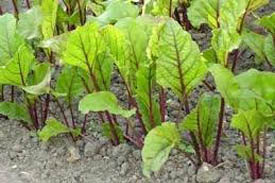Garden Planning and Planting: Tomatoes
 Many people haunting the garden centers are buying tomato plants. I looked at a few common hybrid early varieties about six inches tall and they wanted $5.99 each, plus tax. I was flabbergasted. They were also trying to sell strawberries at $2.59 each. I am happy to think that I have been steering my Dear Readers in the right direction to buy seed, start your own, and compare catalogs for price and availability.
Many people haunting the garden centers are buying tomato plants. I looked at a few common hybrid early varieties about six inches tall and they wanted $5.99 each, plus tax. I was flabbergasted. They were also trying to sell strawberries at $2.59 each. I am happy to think that I have been steering my Dear Readers in the right direction to buy seed, start your own, and compare catalogs for price and availability.
No doubt seed packets will increase as time marches on. Our goal is to save money, have the very best seed for our use, and to help others get a good start.
Tomatoes are derived from Open Pollinated-wind blown agitation. Somewhere in living history commercialization of the hybrid tomato was developed. Now science is starting on genetic manipulation of the tomato. We, as Back2theLander?s, want to purchase Open Polinated (OP) varieties, then at the end of the season save out own seed.
Saved tomato seed will remain viable for 5 years in crude storage from my experiments; longer in cold storage. We will be discussing this aspect next Fall. In the means time plant up to half of your current seed packet, save the rest as a back up.
Open Pollinated-Heritage tomatoes have hundreds of varieties still available. www.totallytomato.com has one of the best selections; including slicers, cherry, green, orange, black, cold weather, hot weather, long season, short season, determinate (all at once, usually for canning) and indeterminate (spaced over a longer period of time). You will experiment, as I do, to determine which grows best for you and your needs. This will take years of time, and that is the joy of gardening (while still enjoying delicious fruits).
Let us assume you have grown, from seed, your own tomato plant and it is about six inches tall. This week, being warm and inviting is calling you with the siren song to plant it. NO! We will wait until after the first of May in the warm valleys, and maybe a weeklonger in the highlands. The plant is still growing, but if it is in the ground too early and a late frost hits-you have lost the plant and a couple months of time. Be patient.
Preparing the tomato bed requires a 5-10-10 NPK, and a neutral, say 6.5 pH. The addition of a rich loamy, heavily composted soil is ideal. Do not forget a sprinkle of kelp. Too much nitrogen will make the plant leggy with lots of vines, but not much fruit.
The plant prefers to sprawl on the ground so it can spread seed, however you will lose many fruits this way and it is better to set a pole, or cage, about the plant to train it upwards.
Some tomato vines can reach 15 feet and require a fence railing. Sold as Triple-Crop and similar names these are tasty fruits but require more work. They do well as arbor plantings. The best cages I have seen, and purchased are sold at Wal*Mart as the ?Ultimate Tomato Cage?. Sturdy, adjustable, and long lasting; I would recommend them. This will reduce daily tying up plants with old panty hose to wood poles that rot at the base, and fall over in a rainstorm.
There is always an argument about spacing plants. Tomato plants require vibration from the wind, or your fingers flicking the flowers for pollination. To reduce any dreaded blights, space them two feet apart, perhaps three feet with the big Russian varieties.
Another argument is pruning the plants. You will observe as the plant grows that there is a leaf with a flower cluster-that?s the fruits. The next leaf above has another vine growing out of that axis, and so on up the plant. Some people like me who grow outside in the hot sun leave the plant to vine up and grow (in a cage) its own way, thereby providing more shade. But in the Green House I have taken to experimenting with pruning out the extra vines, leaving one central leader with just fruits. This year see how they grow, and next year try both ways to see which is best for you.
Canners using OP determinate varieties will like the Amish Paste this year. Roma is an old standby. Plant a San Marzano variety also as it will give you a longer season, and more time to can-can-can. Canners will enjoy the Tomato Strainer kitchen tool, hand cranked models, sold in Totally Tomato, plus a bonus as this is an excellent way to gain seeds. Just refrigerate the pints of wet seeds till we get around to talking about storing them in a dry state. The best tasting variety for slicers is the Caspian ?Pink?.
Greenhouse tomatoes are very picky as most require long photoperiods of light, and in the winter there is less light. Therefore you must select developed greenhouse tomatoes, or experiment with others, for your growing needs; plus you will probably need extra lighting. Start your greenhouse winter tomatoes in June.
To set the plant in your garden space, pre-bottom water the root ball in the can. Prepare a long trench that will allow you to place the entire plant in that trench flat and long ways about six inches deep. Now take the plant, clip off all the leaves except the very top cluster, say two inches. Remove the can on the root ball, lay the plant in the small trench, which has been pre-watered, and pull the compost soil over the plant starting with the root ball. Gently bend the flexible top tip with the leaves up above the ground and pull in the soil. You now have a plant set at this tip point two feet from the next tip point. Roots will spring forth from the stem under the soil and make a more healthy plant that will be better able to feed itself.
Wait you are not done. Take a small stick, or stone, and prop it up against the tip stem protruding from the ground. This is to prevent cutworms at night from curling about the stem and cutting your plants off. As the plants reaches maturity, the bottom stem will be tough as a banker?s heart, and cutworms will no longer be a problem.
Currently a red-orange plastic mulch cover is offered that stimulates fruits. You can also hang strips of red cloths on the tomato cage, which may do the same thing for you. If you use a plastic mulch you will need to use an under plastic soaker hose, drip irrigation, or place a ?? holed 2 gallon bucket, making dirt contact, between plants for watering. My experience is after the plant starts growing up, say a foot tall, is to mulch with straw, hay, or such. The absolute best mulching material is asparagus stalks, chopped-shredded, or simply piled along the row of tomato plants. Tomato and Asparagus are companion plants and love one another. You can grow determinate tomatoes in the Asparagus bed with increased yields. This year I am experimenting with bags and bags of shredded paper from the tons of junk mail we shred each day. Worms love it too. The rains, if they come, soak through the mulch, which holds moisture and provides root cooling. Worms love it. Mulch, mulch, mulch!
Plant a row, or two; of Carrots along with the tomato- this is another companion plant. Also plant some Black Salsify in an adjoining row with the carrots as it helps to reduce the carrot fly problems in this area.
An excellent special compost for the tomatoes is composed of carrot tops, asparagus ferns, and old tomato plants for next year.
Next week we will review and discuss fertilizers-again.
Copyright: 2008, Back2theLand, Mark Steel.



